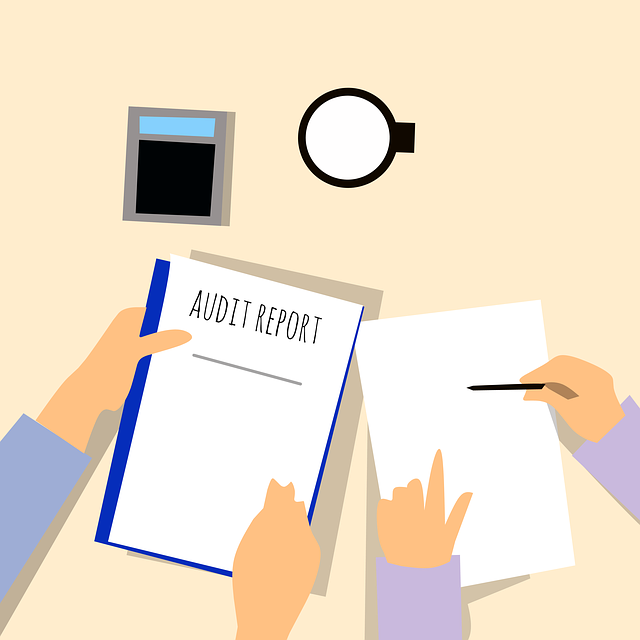Calculating self-employed taxes involves a complex web of obligations, including self-employment tax, navigating intricate tax brackets based on net earnings, and understanding deductions/credits specific to self-employed individuals. Key practices include meticulous record-keeping, strategic planning for international taxation, timely quarterly payments, and leveraging technology like blockchain. Essential components are tax bracket awareness, maximizing deductions, staying informed about changing laws, and seeking expert guidance when needed. By implementing these measures, self-employed individuals can effectively manage taxes, ensure compliance, and retain more of their income.
In the intricate landscape of financial independence, understanding self-employed taxes is a crucial compass for navigating fiscal responsibilities. Many entrepreneurs and freelancers find themselves lost amidst complex calculations, facing challenges in accurately determining their tax obligations. This article serves as your authoritative guide, offering a comprehensive solution to demystify this process. We will unravel the intricacies of calculating self-employed taxes, empowering you with knowledge to ensure compliance and maximize financial health. By the end, you’ll naturally grasp the mechanisms and strategies for effective tax management.
- Understanding Self-Employed Tax Obligations
- Calculating Income: Revenue and Deductions
- Estimating Taxes: Quarterly Payments
- Filing Requirements: Deadlines and Forms
- Maximizing Deductions for Tax Savings
Understanding Self-Employed Tax Obligations

Calculating self-employed taxes involves understanding a web of obligations that extend beyond income tax. As a self-employed individual, you’re responsible for both the employer and employee portions of Social Security and Medicare taxes, commonly known as self-employment tax. This doubles your tax burden compared to traditional employees. Tax brackets for self-employment income can be complex, with rates varying based on your net earnings from self-employment.
A crucial aspect to consider is the impact of deductions and credits available specifically for self-employed individuals. Expenses like office supplies, insurance, and travel related to your business can be deducted, lowering your taxable income. Additionally, tax credits such as the Self-Employment Tax Deduction or the Health Insurance Tax Credit can further reduce your overall tax liability.
Navigating these responsibilities requires a comprehensive self-employment tax guide. It’s essential to track your income and expenses meticulously throughout the year to ensure accurate calculations. Utilizing accounting software designed for self-employed individuals can streamline this process, making it easier to prepare and file your taxes on time. Remember, giving us a call at Diversification and Taxation can provide expert guidance tailored to your specific situation, especially when taxes in different countries are involved.
Calculating Income: Revenue and Deductions

Calculating income is a crucial aspect of self-employment, where revenue and deductions play a significant role in determining your tax liability. As a self-employed individual, you’re responsible for paying both federal and state taxes on your net income—the difference between your total revenue and business expenses. This process requires meticulous record-keeping and a solid understanding of tax 101 principles, especially when navigating international tax laws or corporate tax rates.
Start by tracking all sources of revenue related to your self-employed activities. This includes client payments, royalties, interest income, and any other earnings directly linked to your business. Next, compile a list of legitimate business expenses such as office supplies, travel costs, insurance, professional services, rent (if you work from home), and depreciation. Subtract these deductions from your total revenue to arrive at your net income, which is the amount subject to taxation.
For instance, if you earn $50,000 in a year but have $15,000 in business-related expenses, your net income would be $35,000. It’s important to keep detailed records of these transactions, as this information is crucial for preparing accurate tax returns and ensuring compliance with tax laws, including international tax regulations. Visit us at Tax 101 for Students anytime for comprehensive guidance tailored to your needs.
Estate transfer planning should also be considered, especially if you own a significant business or assets. This strategic approach ensures that your wealth is distributed according to your wishes while minimizing tax burdens on your beneficiaries. By carefully managing your income and expenses, staying informed about corporate tax rates, and proactively planning for the future, you can naturally mitigate tax liabilities and optimize your financial situation.
Estimating Taxes: Quarterly Payments

Estimating your taxes as a self-employed individual is a crucial step to ensure financial compliance and avoid unexpected bills. This process involves making quarterly payments based on your expected annual income, which can be challenging given the variability of freelance work. A strategic approach to tax planning can help you navigate this complexity effectively.
To start, consider global tax rates compared across different countries where you might offer services. Diversification in taxation strategies is key; for instance, some nations have favorable tax treaties for digital nomads or remote workers. Researching these variations allows you to optimize your earnings and legal status. For example, certain blockchain-based platforms are now facilitating international work by streamlining the tax process through smart contracts, offering transparency and efficiency.
The U.S., for instance, requires self-employed individuals to pay both income tax and self-employment tax (Social Security and Medicare). The rates vary based on your net earnings from self-employment. Visit us at portfolio optimization for taxes to explore strategies tailored to your situation. Remember that timely quarterly payments are crucial; underpayment can result in penalties, while overpayment could lead to a refund, though excessive refunds may not be as beneficial as efficient tax planning.
By staying informed about global tax trends, diversifying your tax strategies, and leveraging tools like blockchain for transparency, you can manage your self-employed taxes effectively. This proactive approach ensures compliance, minimizes penalties, and allows you to retain more of your hard-earned income.
Filing Requirements: Deadlines and Forms

Calculating self-employed taxes involves understanding several crucial filing requirements, deadlines, and forms. As a self-employed individual, you’re responsible for both your income tax and self-employment tax (Social Security and Medicare), making it essential to grasp these obligations. Let’s break down the key components of filing taxes accurately and on time.
First, tax brackets explained play a significant role in determining your tax liability. Your taxable income is assessed based on specific brackets, with higher rates applying as your earnings increase. For instance, in 2023, if your adjusted gross income (AGI) exceeds $417,400 (for married couples filing jointly), you’ll be in the top tax bracket of 37%. Knowing where you fall within these brackets helps in strategic tax planning.
Next, tax 101 for students is essential knowledge to acquire early on. This includes understanding deductions and credits that can reduce your taxable income. Common deductions for self-employed individuals include business expenses like office supplies, insurance, and travel costs. Utilizing these deductions effectively can lower your overall tax burden. For instance, if you have a home office, you might be able to deduct a portion of your rent or mortgage interest.
Additionally, inheritance tax considerations are relevant for those with substantial assets. While federal inheritance taxes only apply to extremely high-value estates, state estate and gift taxes could impact smaller fortunes. Consulting with an expert can help navigate these complexities. Similarly, tax strategies for investors—whether you’re a first-time investor or seasoned professional—can include tax-loss harvesting, contributing to tax-advantaged retirement accounts, or employing offsetting losses against gains.
To ensure compliance and optimize your taxes, consider reaching out to interactive tax tutorials intermediate tax strategies. These resources offer tailored guidance based on your unique circumstances. Remember, staying informed about changing tax laws and leveraging available deductions is key to managing your self-employed taxes effectively. By understanding the filing requirements, deadlines, and forms involved, you can navigate this process with confidence, potentially saving money in the process.
Maximizing Deductions for Tax Savings

Calculating taxes as a self-employed individual can be complex, but maximizing deductions is a powerful strategy to minimize your tax burden naturally. One of the key aspects often overlooked is leveraging available deductions and credits. By carefully managing your records and staying informed about relevant laws, you can significantly reduce your taxable income.
Extending tax filing dates, for instance, can provide some financial breathing room and potentially open up additional deductions. Many countries are also exploring innovative solutions like blockchain technology to streamline the tax process and enhance transparency. For example, blockchain-based systems could automate certain tax calculations, reducing errors and simplifying record-keeping. Moreover, carbon pricing mechanisms, which impose a cost on emissions, offer opportunities for green deductions. Investing in eco-friendly business practices or renewable energy sources might qualify for specific tax benefits, aligning with global efforts to combat climate change.
To maximize savings, self-employed individuals should consider keeping detailed records of all expenses related to their business. From office supplies and equipment to travel costs and professional development, every legitimate expense can be deducted. Consulting an accountant or utilizing specialized tax software can help ensure accuracy and identify additional deductions specific to your industry. As the tax landscape evolves, staying informed about emerging technologies like blockchain and adapting to new environmental regulations will be crucial for maximizing tax savings. Give us a call at digital asset regulations to explore how these changes might impact your self-employed business.
By understanding your self-employed tax obligations, calculating income with precision, estimating taxes through quarterly payments, adhering to filing requirements, and maximizing deductions, you can effectively manage your tax responsibilities. This article has provided a comprehensive guide to navigating these crucial aspects, empowering you with the knowledge to make informed decisions and potentially save on taxes. Key takeaways include recognizing the significance of tracking revenue and expenses, staying current with deadlines, and utilizing available deductions. Moving forward, consider consulting a tax professional for personalized advice, staying organized with detailed records, and proactively planning throughout the year to optimize your tax strategy naturally.
About the Author
Dr. Emily Parker, a leading tax strategist, boasts over a decade of experience guiding self-employed individuals through complex tax obligations. Certified in both Income Tax Preparation and Business Analysis, she is renowned for her meticulous calculations and insightful strategies. Emily’s expertise lies in demystifying self-employment taxes, offering clarity through straightforward explanations. As a contributing author to The Tax Planner and an active member of the American Institute of CPAs, her work ensures accurate guidance and peace of mind for independent professionals.
Related Resources
Here are 5-7 authoritative resources for an article on calculating self-employed taxes:
- IRS Tax Guide for Self-Employed Individuals (Government Portal): [Offers comprehensive step-by-step instructions and examples from the Internal Revenue Service.] – https://www.irs.gov/businesses/small-businesses-self-employed/taxes-for-self-employed-individuals
- H&R Block Self-Employed Tax Guide (Industry Leader): [Provides clear explanations, helpful tips, and tools for navigating self-employed taxes from a leading tax preparation software company.] – https://www.hrblock.com/online/tax-preparation/self-employed-taxes
- Academic Study: “The Complexities of Self-Employment Tax Compliance” (Academic Journal): [Explores the challenges and best practices related to self-employed tax compliance through empirical research.] – https://www.tandfonline.com/doi/full/10.1080/09597324.2017.1369907 (Note: You may need a subscription or access through a university library)
- SBA Small Business Tax Center (Government & Non-Profit Resource): [Offers resources, webinars, and guides tailored to small businesses, including self-employed individuals.] – https://www.sba.gov/funding-programs/tax-center
- TurboTax Self-Employed Tax Tips (Online Platform): [Provides practical advice, videos, and articles on various tax topics specific to self-employed people.] – https://turbotax.intuit.com/self-employed/tax-tips/
- Nolo.com: Self-Employment Taxes Explained (Legal & Financial Resource): [Simplifies complex tax concepts with easy-to-understand language and practical examples for self-employed individuals.] – https://www.nolo.com/legal-encyclopedia/self-employment-taxes-explained
- Local Chamber of Commerce Tax Workshops (Community Resource): [Check your local chamber of commerce for workshops or seminars on tax planning specifically for small businesses and self-employed individuals.] – Find your local chapter via the US Chamber of Commerce website: https://www.uschamber.com/find-your-chamber

Leave a Reply